The History of Chinese Dumplings
If you had to name a typical Chinese dish, what would come to mind first? The Beijing roast duck? General Tso’s chicken that’s easily found in US Chinese restaurants?
There is one dish that you might overlook, dumplings. Chinese Dumplings have a history of more than 1,800 years. Compared to other famous Chinese dishes, dumpling is not that eye-catchy, neither how by their looks nor its taste.
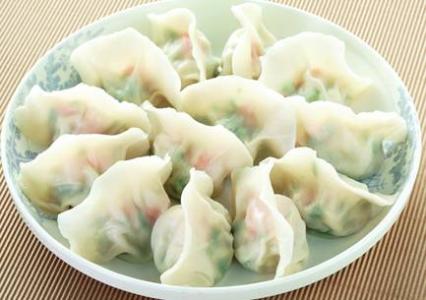
But just like many other countries, the most typically eaten food might not be the tastiest or the best looking. Dumplings, in the eyes of a native Chinese, would be one of the top native dishes in China.
Due to its high popularity, there are many sayings tied to dumplings in Mandarin Chinese. A typical one is:
Hào chī bùrú jiǎozi, shūfu bùrú dàozhe
好吃不如饺子,舒服不如倒着。
Nothing is tastier than dumplings, no position is more comfortable than lying.
When I was a child, I could only agree with the later half sentence, for I didn’t really like dumplings as it is so featureless compared to all the other dishes on the dining table. Not to blow things out of proportion, but people in China have dumplings for almost all the traditional festivals and holidays. This was one of the reasons that made me not like dumplings: Why do I have to eat dumplings every holiday, how is that special!?
Yet as I grew up, I gradually understood the meaning of that saying. For me, its taste is only part of the reason why people in China love dumplings, the other is the feelings and memories it brings you of your time at home the memory, the joyfulness of family, a reminder of all the good times we had together.
So what does authentic Chinese dumplings look like? What are the most popular fillings?
First, we will take a close look at this symbolic food of China,饺子 (jiǎozi).
What do dumplings in China look like?
You might have already tried different kinds of dumplings like ravioli from Italy, deep fried dumpling in your local Chinese buffet. What are the differences between them and the dumplings found in a Chinese dining table?
I would say the fillings matter the most for Chinese dumplings. A dumpling is mainly made of two parts: the outside wrapper and the the filling. In China, dumpling wrappers, are made of just flour and are very thin, the wrapper is pretty much all the same throughout China with just the filling changing (similar to other staple in China like steam bun).
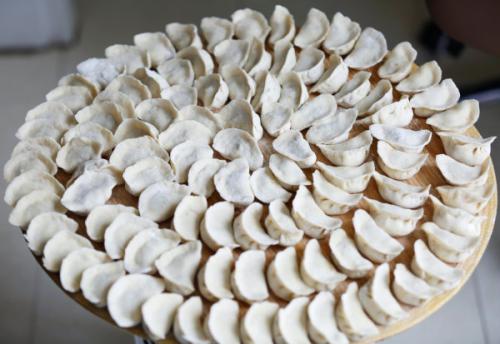
The classic fillings usually are a mix of a specific kind of meat and some vegetables. What’s the most classic one? Well, you might not be familiar with some of the ingredients at all. The two fillings I find most common in the north are pork with Chinese chive or fennel, both of which have a strong smell and taste. These vegetables complement the taste of the pork very well. Other vegetables that can be found in dumplings include Chinese cabbage, celery, carrot and many more. The stuffing usually has one type of meat as it’s main filling, from pork, beef, mutton, to shrimps. Speaking of shrimps, the ‘three delicacies filling’ is another tasty stuffing which as the name suggests has three ingredients, it includes mushroom, egg and shrimp. It tastes very good as the three ingredients pair well with each other.
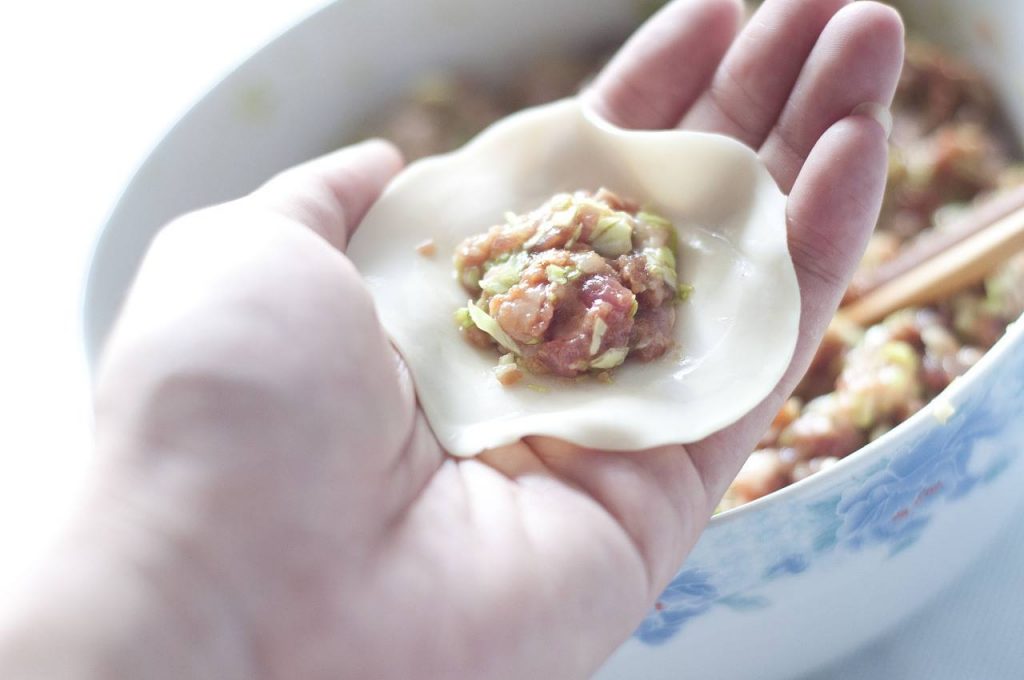
People always eat dumpling by dipping them in vinegar and sometimes fried red pepper sauce and garlic. And don’t forget to drink a bowl of dumpling soup after your meal. It will warm you up in the winter!
When we talk a about a national dish, we always want to learn the history behind it, especially for one as popular as dumplings. Here is the story of Jiaozi!
Jiaozi is believed to have been invented by a legendary doctor (Zhang Zhongjing) in the Han Dynasty about 1800 years ago. Zhang was not only an experienced physician but also a pioneer of traditional Chinese medicine.
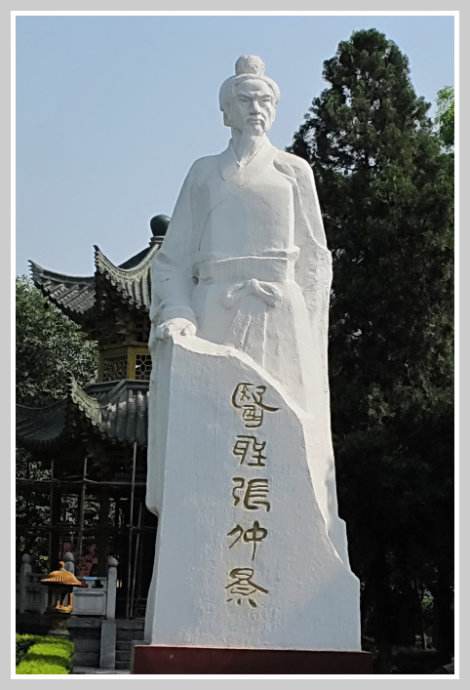
After retiring from the government work, he went back to his hometown. On the way home, he encountered many patients suffering from frostbite, especially in their ears. He knew how to cure this but there were so many patients and he couldn’t personally reach all of them. So he came up with an idea. He gathered together the materials formed a recipe that can cure the frostbite injury and divided it into small pieces. Then he wrapped each piece with a wrapper made of dough and put them in the boiling water until it was ready to eat. He delivered this to all the patients and they all were cured. These were the original dumplings. Traditional Chinese medicine uses raw materials from the nature as medicine rather than their chemical extracts.
Later on, due to its cooking convenience and a variety of the types of fillings to choose from, dumplings gradually went nationwide. It was eaten and loved by people from all walks of life and was given different names in every dynasty in China. The name we use today, Jiaozi, was from the last dynasty, the Qing.
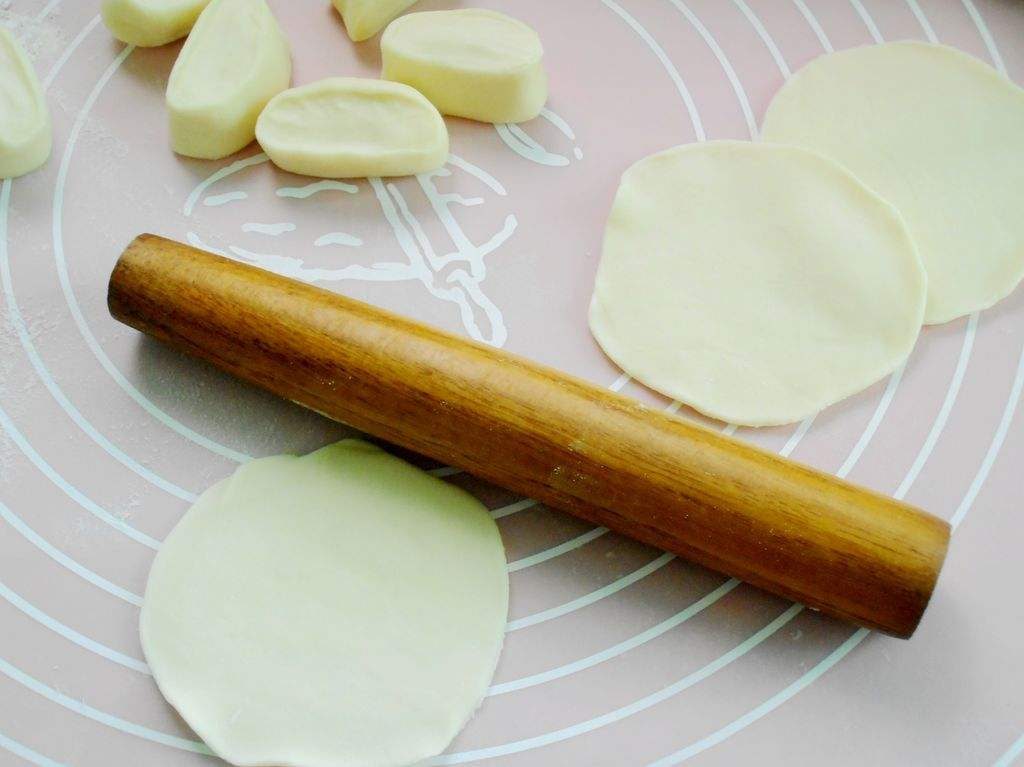
In Chinese, the word Jiaozi sounds similar to another word which means “the cross of the day”. This is why people always have dumplings on their dinner table in the evening of CNY, to celebrate the moment of passing time and bringing in a new year.
Jiaozi plays a main role not only on the CNY menu but also in many other traditional important holidays, including many solar terms like the beginning of the spring, summer, fall and autumn, winter solstice, the 100 days’ celebration for new babies… Generally speaking, you can celebrate any traditional celebration with this food! I guess that’s the reason why it has developed so many different fillings. What are these Chinese food culture? Click to find out more!
Interesting facts about Jiaozi
Of course, people don’t only consider Jiaozi as an everyday dish. It means a lot to Chinese people. Here are some interesting things about this dish.
During the CNY, many families make jiaozi themselves, and this can be turned into a fun family activity! People put rings or other valuable things in one of the dumplings. Can you guess why? It is believed the person who gets this dumpling will have good luck in the new year. Although their teeth might not think so! You have to be lucky not to chip a tooth or choke whilst trying to get some dumpling good luck!
Another fun fact to know about is the famous difference between the north and the south. Jiaozi though a national recognized dish in China, it is more welcomed in the north than in the south, as southerners have many other choices for festivals dishes based on rice. This makes sense as the south grows a lot of rice and the north a lot of wheat! So many northerners find it weird when they are in the south and find Jiaozi is not the only dish used to celebrate big holidays, while people from the south usually don’t understand why the north is so passionate in relating everything to Jiaozi. Besides, there are also regional differences towards the fillings. So you can get the chance to try different types of Jiaozi in different areas of the country should you visit different provinces.
To wrap up this filling of information, Jiaozi has been embodied with so many good wishes by Chinese people and is an unshakable symbol of family. This is why it is indispensable in Chinese people’s daily life. You might be wondering how to make them? We have a video for you! Follow our host Erin and teacher Shawn to find out how to make authentic dumplings and learn some fun Chinese words related to them!
Copyright Notice: Everyone is welcome to forward the articles in this blog as long as the links to these articles are also included.


Hey there! Do you use Twitter? I’d like to follow you if that would be okay. I’m definitely enjoying your blog and look forward to new updates.
The latest Tweets from Lingo Bus https://twitter.com/lingo_bus (@Lingo_Bus). Online Chinese classes for kids 5 – 12 Check our website (https://www.lingobus.com/) for FREE demo class!
Greetings! Very helpful advice in this particular article!
It is the little changes that produce the most important
changes. Thanks for sharing!